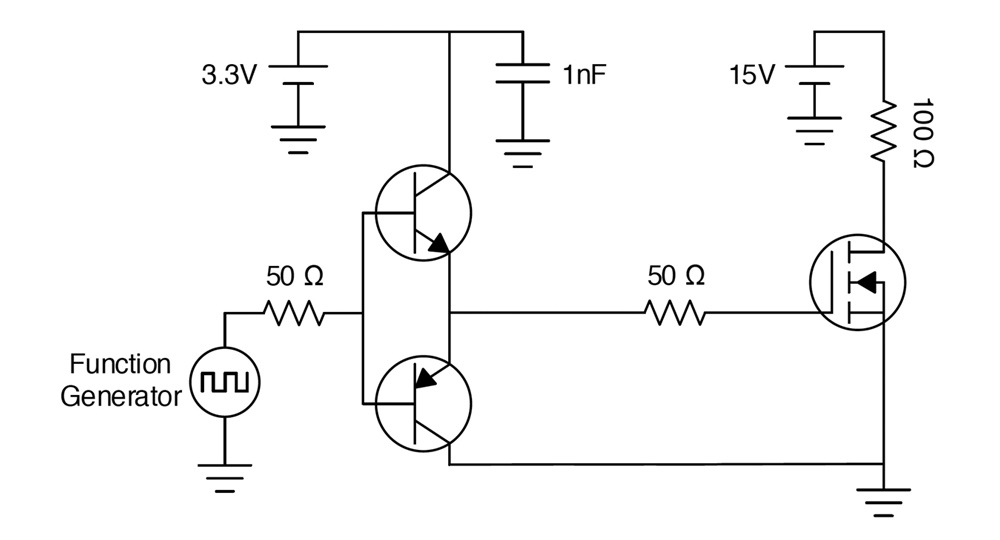

I did the same scheme in my proteus and put the output as a motor, but it does not work, the engine did not turn when I put the entries in Hin and Lin. It have same features of IR, you can use it for simulation purpose. Pleas upload the IR for new newbie learner. This picture depicts the 2D dimension diagram of IC. You always require an exact physical dimension while designing a PCB. Not Gate provides an inverted signal to pin 12 that is input signal for low side Mosfet. Mosfets are used in half-bridge configuration mode. Single IC drives both high side and low side Mosfets. In this examplethe half-bridge inverter circuit is designed using Mosfer driver and IRF Mosfets. MOSFET Transistor Basics & Working Principle Its output pins can provide peak current up to 2 amperes. IR can withstand voltage up to v offset voltage. It has a floating circuit to handle to bootstrap operation. To know about totem pole output and its used a Mosfet driver go through the following article. Because it has low input impedance and high drive current. This problem is known as the miller effect. One can do it very easily but there is one issue. These are used to create a pathway for the inductive voltage spike to go.It can drive both low side and high side switches in half-bridge and low bridge circuits. The most common way to handle this voltage spike is to use “flyback diodes.” These aptly named diodes are typically just standard diodes, rated at many times the supplied voltage. The induced voltage is always the opposite polarity of the applied voltage. If there is no safe way to dissipate this within the circuit, this voltage can destroy the circuit. This voltage can be many times the supplied voltage used in the circuit. The only way it can do this is by increasing the applied voltage across the terminals of the motor. This field then tries to keep the amount of current flowing constant. When power is removed, the magnetic field collapses. Once the motor is up to speed, the stored energy is at a maximum.

Once power is supplied to the motor, it stores energy in a magnetic field. The most important item to understand when driving a DC motor is that it acts as an inductive load. Inductive flyback protection Flyback diode basics Other than accounting for flyback spikes due to the inductive nature of DC motors, there are few external parts. One of the main advantages of using an integrated H-Bridge is the simplistic nature of the external circuit. The main topic of this video is to discuss the implementation of an H-Bridge IC in a schematic and printed circuit board (PCB) layout. Some ICs will contain circuitry to help protect from inductive loads, but the TC78 does not. At quantities of 2000 parts, they are available for around $0.60 each. For example, the TC78H620 contains over-current detection, thermal monitoring/shutdown, and undervoltage lockout. The number of features that a modern IC contains, along with the reduced design time and part count make the usage of ICs quite attractive.

This is especially the case when designing an H-Bridge circuit. In my opinion, for the majority of use cases, it is better to use an IC when one is available. The circuit I will be showing today is based on an integrated circuit H-bridge, specifically a Toshiba TC78H620. Integrate Chip (IC) Discrete componentsįigure 2: Basic layout of an H-Bridge circuit using discrete MOSFETs. Many H-Bridge circuits have protection to prevent a “shoot-through” condition from occurring, but it is still best to ensure that it will not arise programmatically. An immediate short circuit results, and can destroy the rest of the circuit, causing the magic white smoke to appear. This condition occurs when S1 and S2 are closed, or S3 and S4 are closed. If all switches are open, or only a single switch is closed, the motor will have no power, and will “coast.” If both S1 and S3 are closed, or S2 and S4 are closed, the motor is powered to resist motion and will brake if currently spinning.Care must always be taken to ensure a “shoot-through” condition never occurs. If S3 and S2 are closed, the motor changes direction and now rotates in the opposite direction. When S1 and S4 are closed, the motor is powered and spins in one direction. Image: Cyril BUTTAY, from Wikimedia CommonsFigure 1 shows a basic high-level view of an H-bridge circuit controlling a DC motor. Figure 1: Simplified diagram of an H-Bridge circuit (in red) driving a DC motor.


 0 kommentar(er)
0 kommentar(er)
